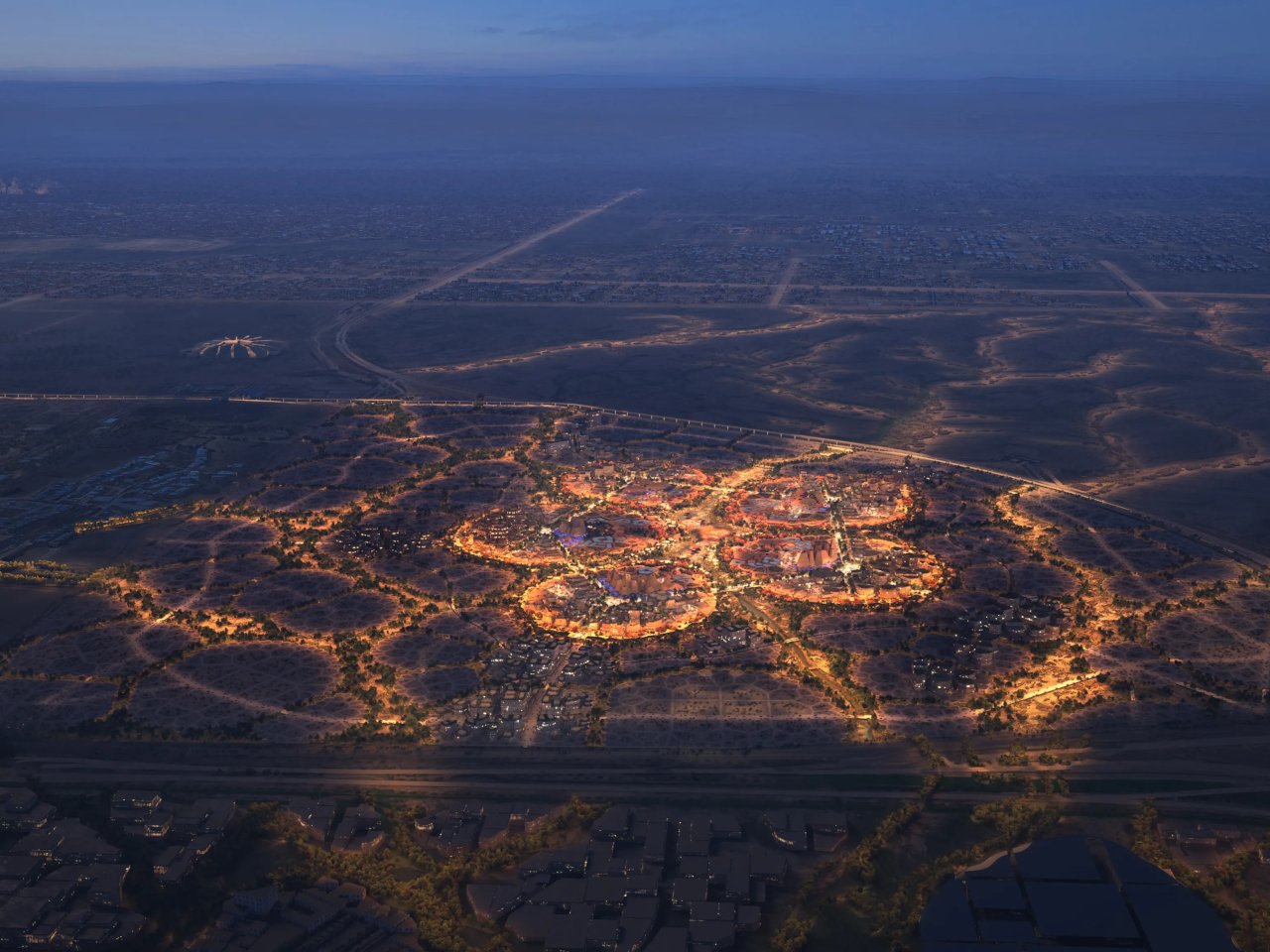World Expos have a complicated legacy when it comes to lasting impact on their host cities. Sure, we remember the iconic structures like the Eiffel Tower or the Crystal Palace, but for every architectural triumph, there are countless examples of empty pavilions and dismantled infrastructure that served their purpose for six months and then became expensive maintenance burdens. LAVA’s concept master plan for Expo 2030 Riyadh attempts to break this cycle entirely.
The Laboratory for Visionary Architecture, led by Chris Bosse, has developed a master plan that treats the expo not as a temporary spectacle but as the foundation for a permanent global village. Strategically positioned between King Salman International Airport and Riyadh City, the six-square-kilometer site is designed from the outset to evolve seamlessly from expo grounds into a thriving residential and cultural district that serves the city’s long-term growth rather than just the event’s immediate needs.
Designer: LAVA
What makes LAVA’s approach particularly compelling is how it abandons the rigid urban grids that have dominated Western car-based planning for over a century. Instead, the master plan follows the natural contours of Wadi Al Sulai, using parametric modeling to create an organic network of spaces that work with the desert landscape rather than against it. Cool routes formed by reactivated wadis extend outward from a central plaza, creating shaded pedestrian pathways and natural cooling microclimates that address Riyadh’s harsh climate.
The site organizes around five major districts radiating from the central plaza like petals, each dedicated to specific themes: Transformational Technology, Sustainable Solutions, Prosperous People, Saudi Arabia, and Global Collaboration. Each district functions as a unique village with its own amenities and architectural language based on fractal geometry, where patterns repeat at different scales to create coherence without monotony throughout the development.
The mobility system prioritizes pedestrians and soft transport over cars, featuring the World Avenue Loop that connects all five districts through landscaped promenades and charming alleyways reminiscent of traditional souks. Elevated paths and shaded corridors ensure the site remains comfortably walkable even during peak heat, while connections to Riyadh’s metro network and major arterial roads provide broader urban integration that extends far beyond the expo boundaries.
Perhaps most importantly, the plan incorporates serious ecological regeneration through soil stabilization, nature-based water management, and extensive tree planting that reinforces the wadi system’s natural drainage and irrigation functions. This isn’t just about creating pleasant spaces for visitors but about establishing a sustainable urban ecosystem that can protect against flooding while supporting biodiversity in a desert environment.
LAVA’s master plan represents a fundamental shift in thinking about how temporary events can create permanent value for their host cities. By designing with nature rather than imposing upon it, and by planning for legacy from day one, the Expo 2030 Riyadh concept offers a compelling model for how future cities might grow, thrive, and endure in harmony with their natural environments.
The post LAVA’s Expo 2030 Riyadh Plan Reimagines the City as a Living Oasis first appeared on Yanko Design.

